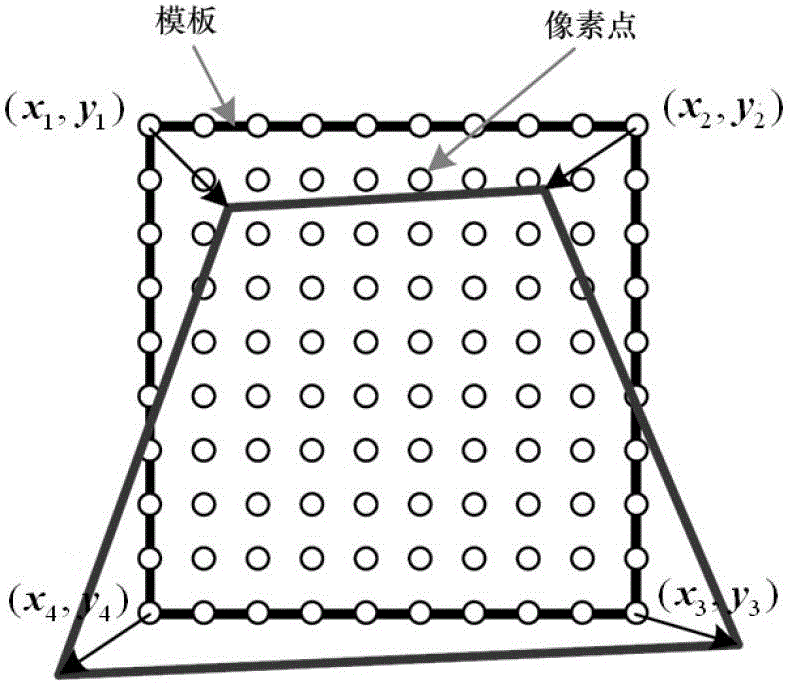Unmanned aerial vehicle autonomous navigation landing visual target tracking method
An unmanned aerial vehicle, visual autonomous technology, applied in instruments, character and pattern recognition, computer parts and other directions, can solve problems such as inability to reliably track ground targets
- Summary
- Abstract
- Description
- Claims
- Application Information
AI Technical Summary
Problems solved by technology
Method used
Image
Examples
Embodiment Construction
[0057] The present invention will be described in detail below with reference to the accompanying drawings and examples.
[0058] Step 1. The airborne camera collects the template image of the landing target point and performs affine illumination normalization on the template image to obtain the pixel gray value I of the normalized template image at point x norm (x), where x represents the coordinates of the pixel in the template image;
[0059] For a video sequence, the target motion can be regarded as a three-dimensional motion in two-dimensional space and time dimension. Therefore, the gray value of the pixel point of the real-time input image at x=(x, y) at time t is expressed by I(x , t) said. put a certain t x The real-time video image at the moment is selected as the reference image, and for the target area selected in the reference image, a point set containing N elements can be used represent, and the column vector I(x,t) of the image gray value corresponding to t...
PUM
 Login to View More
Login to View More Abstract
Description
Claims
Application Information
 Login to View More
Login to View More - R&D
- Intellectual Property
- Life Sciences
- Materials
- Tech Scout
- Unparalleled Data Quality
- Higher Quality Content
- 60% Fewer Hallucinations
Browse by: Latest US Patents, China's latest patents, Technical Efficacy Thesaurus, Application Domain, Technology Topic, Popular Technical Reports.
© 2025 PatSnap. All rights reserved.Legal|Privacy policy|Modern Slavery Act Transparency Statement|Sitemap|About US| Contact US: help@patsnap.com



